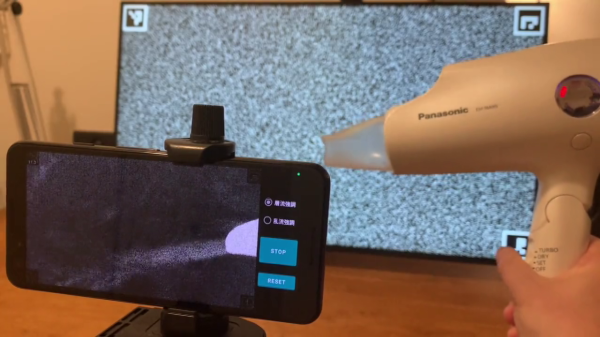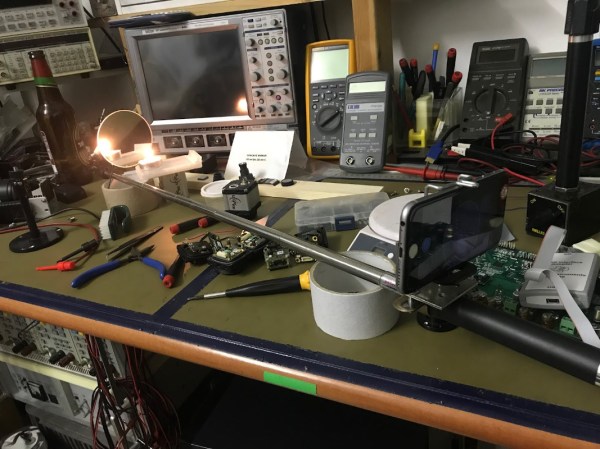Multiple people have recently shared this exciting demonstration (nitter) with us – visualizing airflow using a smartphone, called ‘background-oriented schlieren’. On a hot summer day, you might see waves in the air – caused by air changing density as it warms up, and therefore refracting the light differently. Schlieren photography is an general set of techniques for visualizing fluid flow, but of course, it can also be applied to airflow. In this case, using some clever optical recognition tricks, this schlieren method lets you visualize flow of air using only your Android smartphone’s high resolution camera and a known-pattern printed background! Continue reading “Observe Airflow Using Smartphone And Background-Oriented Schlieren”
fluid3 Articles
Schlieren On A Stick
Schlieren imaging is a technique for viewing the density of transparent fluids using a camera and some clever optical setups. Density of a fluid like air might change based on the composition of the air itself with various gasses, or it may vary as a result of a sound or pressure wave. It might sound like you would need a complicated and/or expensive setup in order to view such things, but with a few common things you can have your own Schlieren setup as [elad] demonstrates.
His setup relies on a cell phone, attached to a selfie stick, with a spherical mirror at the other end. The selfie stick makes adjusting the distance from the camera to the mirror easy, as a specific distance from the camera is required as a function of focal length. For cell phone cameras, it’s best to find this distance through experimentation using a small LED as the point source. Once it’s calibrated and working, a circular field of view is displayed on the phone which allows the viewer to see any change in density in front of the mirror.
The only downside of this build that [elad] notes is that the selfie stick isn’t stiff enough to prevent the image from shaking around a little bit, but all things considered this is an excellent project that shows a neat and useful trick in the photography/instrumentation world that could be useful for a lot of other projects. We’ve only seen Schlieren imaging once before and it used a slightly different method of viewing the changing densities.
Build A Twitter Client With Fluid
The Fluid Site Specific Browser (SSB) is one of our favorite pieces of kit for Leopard. You can use Fluid to give web services you use constantly like Gmail, Facebook, Wikipedia, or Pandora their own icon and a browser tailored to that site’s specific workflow. Fluid based on WebKit and has plugin support among many other features. Embedded above is [Eric Eggert] showing how to create a reasonable Twitter client using it. The initial setup is identical to any other Fluid app: point it at https://twitter.com/. The clever bit is leveraging Fluid’s GreaseMonkey style userscripting support. He created a userscript to autorefresh. A second userscript is used to strip off all of the extraneous page elements leaving just the text field and the timeline. Every time you get a new message it generates a growl notification and you can even attach it to the status bar. Best of all: it avoids all API limitations since you’re accessing through the web interface.











